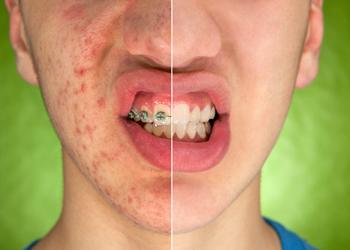Fairfax, VA 22033
Patients interested in learning more about common skin conditions, and what can be done to treat them, will find our series of articles on skin care educational. Dwana R. Shabazz, M.D, M.P.H. is a regular contributor to FairFax Woman Magazine, where she posts a new article each month. Subjects include:



Am I done with this yet?
Acne is the most common skin condition treated. It is known to be prevalent during the teenage years, but acne is seen in all age groups. Acne is quite simple to diagnose, although the exact cause is not that easy to explain. The components of acne include excess oil, which recruits bacteria, clogging of the pores and even inflammation. But why some get it in a mild versus a severe fashion and some at a young age and others for the first time in their 30s or 40s cannot fully be answered. There are factors that may trigger acne, or make it worse, but are not the cause, including, but not limited to, an inconsistent skin care regimen, hormones, diet, and stress. Let’s take diet for example, many people decrease or even stop eating greasy foods, chocolate, or other commonly implicated foods and it seems like their face looks amazing. However, others that make this change diligently see no improvement at all. Keep in mind that eating these types of foods in moderation will still benefit one’s general health.
What can you do to help?
The above example makes the point of while acne is easy to identify, treatment has to be tailored to the individual. The discussion with your dermatologist should include a daily wash and moisturizing regimen, which includes the use of sunscreen. Most of the time will be spent talking about medications that might be implemented. There are many medications on the market, but what works for your best friend may not work for you. Factors that should be considered when choosing a treatment plan are:
- Severity of the acne- Can I get away with just using a topical or do I need oral medications?
- What is the age of the patient?
- What is the gender of the patient? If female, is she pregnant, nursing, or considering pregnancy?
- Is my skin very sensitive?
- What is my work schedule? Am I only going to apply one cream daily or can I do two, should I just consider in office procedures?
- Where is the acne located?
These are just a few considerations when the doctor and patient are coming up with a treatment plan.
Is it working yet?
The treatment options for acne are very effective, but tailoring expectations and being consistent are the keys to success. First, it must be known that results do not occur overnight. It may take on average about six weeks to start seeing a difference. Once success is achieved, there has to be some type of maintenance in place to prevent recurrence. What is success? If the face is smooth, the acne medications were effective, but scarring and discoloration can remain. This then can be addressed with a different modality of treatment, including but not limited to topical lightening products, microdermabrasion, chemical peels and laser.
In summary, there are many options to treat acne. It is simply a matter of having the treatment plan tailored to your specific needs. Consistency and expectations should be addressed so that achievable benefits can be received.







